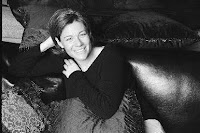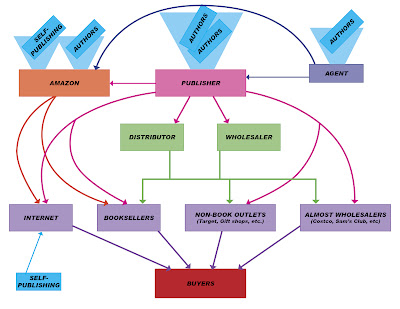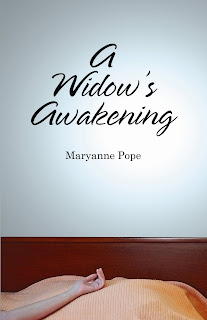Tag Archive for: self-publishing
What is it I’m doing again?
/in Uncategorized/by The Stiletto GangSurvival of the Smartest
/in Uncategorized/by The Stiletto GangThis past week I’ve been following the Amanda Hocking story. If you don’t know who she is, don’t feel bad. I didn’t either until she started making publishing headlines. Although apparently, plenty of other people did know who she was. She’s the chick who self-published her novels, selling them on Amazon, and Barnes and Noble, and has made 7 figures since putting up her first book last year. Yes, you read that correctly. According to this NY Times article she’s made almost 2 million dollars. The interesting thing is that she made news recently because despite all her mega success in the world of self-publishing she’s just signed a huge deal ($2 million) with St. Martins Press for 4 YA novels, the first scheduled to debut next year. You can read about the deal right here.
In an interesting twist, Barry Eisler, a best selling author of traditional published books, has turned down an offer from the same publisher (St. Martins Press) to self-publish. He thinks he’ll end up making more money in the long run, by going it alone. I have to say, he makes sense. You can read his reasoning right here on Book Beast.
This all takes me back to last October, sitting in that big conference room listening to the panel talk (one of the panelists, by the way, was self-pub guru Joe Konrath) about the future of publishing. I think after the events of the past couple of weeks, I can say that almost anything can and will happen. We have to adapt. We have to write smarter and be smarter businesswomen. Our books are our merchandise and we have to get our merchandise in front of people to read. Any way we can.
Maria
Self-Publishing a Book?
/in Uncategorized/by The Stiletto GangIf so, be prepared for the pitfalls, plan accordingly for the strikes against you and then figure out how to optimize on the opportunities.
Let’s start with the bad news:
There is a pre-conceived notion that self-published books are of lesser quality than traditionally published books.
And frankly, for good reason…there are some really lousy self-published books out there! But there are also plenty of excellent self-published books in the marketplace, as well as a great deal of not-so-stellar books published by traditional publishers. Your job, as an author, is to write an outstanding manuscript. Without THAT key ingredient, it doesn’t matter who publishes your book – it likely won’t sell many copies.
Self-published books do have a strike against them from the start – not necessarily with readers, as many people simply don’t care who the publisher is, but definitely with both independent and chain bookstores as well as with the media. And this is not something an aspiring self-published author can take lightly because it will significantly impact how you market and distribute your book.
I self-published my first book in 2008. When we sent out a press release announcing that the book had sold 1500 copies, I followed up with a local independent bookstore down the street to see if they’d like to carry it. The owner advised me that although they very rarely take self-published books, there was something about my marketing materials that caught her eye, so she invited me to drop off a copy to review.
A couple of days later, I received this e-mail from her:
I did pop into the middle of the book and read a couple of pages. WOW. I was amazed actually. You are a very powerful writer. I didn’t expect that.
Hmmm…was she surprised because it was self-published or because of the subject matter (grief)? I e-mailed her back to find out. This was her response:
I just expected because of the loss in your life, and you are writing about a personal, painful subject, I went into it thinking it would be soft and heartfelt, which it is…but…you are also a writer who can put across those thoughts in such a powerful way. It took me by surprise.
Trust me, my manuscript was a soft and syrupy sentimental mess in the early stages and, if released into the world, would have been aptly placed into the category of ‘really lousy’ self-published books. Instead, I worked with three professional editors over a period of eight years to get the manuscript – and me – where it needed to be before self-publishing.
Here are a few realities to be aware of when considering self-publishing:
1. Self published books are rarely considered for literary prizes.
2. Self published books are rarely reviewed by mainstream media.
3. Many independent bookstores will not carry self-published books.
4. If a larger bookstore chain does carry a self-published book, it’s usually on consignment – which will likely mean it is not in the computer system.
Items one and two relate to marketing and public relations…think of these as the drivers of traffic to your book. Without them, it’s awfully hard to let a significant number of people know that your book exists. Granted, very few writers win literary awards – but a review in the newspaper is fairly standard operating procedure to reach potential readers.
Items three and four are about distribution. It’s all fine and dandy to raise awareness about your book – but if there’s nowhere for people to actually buy it, that makes sales somewhat difficult.
Thankfully, however, there are ways to navigate around these obstacles – especially with the internet and social media – but it still takes time, money and energy to determine which marketing methods actually work for your book.
And now for the good news about self-publishing…
The number one benefit, for me at least, is that I retain creative control over every aspect of the book – from the story itself to the book cover to the marketing strategy to where it’s sold and for how much. Not convinced this is a big deal?
An entrepreneurial friend of mine was commissioned by a publisher to write a book about her experience…a dream come true for an aspiring author. So she did.
And yes, she got her book professionally published. But she had no say about the book title (which she hates), the book cover (which she also hates), and where it will be sold (on a display rack at motor vehicle branches). She’s also footing the bill for the production of the book’s website, the launch party and all travel expenses related to marketing and promotion. I think she’s even doing her own PR.
Welcome to the new reality of working with some conventional publishers…you get their stamp of approval and a foot in the door of their distribution network but not a heck of a lot else. Having trod the path of flogging my self-published book for more than two years now, I totally understand why more and more traditional publishers are going this route. It is extremely difficult to sell a significant number of copies of a book!
If you do decide to self-publish your book, here are few tips to help increase the chances that you sell more than fifty copies:
1. Professional editing is absolutely essential.
2. Take a course or read a book on the ins and outs of self-publishing.
3. Find your niche markets and focus on reaching them.
4. Utilize local media to drive readers to your book.
5. Choose to tackle a few marketing strategies and do them well versus going off in a whole bunch of unrelated directions.
6. Consider giving presentations about subject matters linked to your book.
- This is a good way to sell copies of your book after your presentation.
- Be aware that public speaking can be very time and energy consuming, never mind nerve-wracking if that’s not your cup of tea.
If you decide to self-publish, be prepared to put in just as much time – or more – on promoting, marketing, distribution and sales as it took to research, write and publish the book in the first place. I have found self-publishing to be an excellent learning experience but the time, money and energy it has taken me to sell 1500 copies of my book could also have been spent writing. But that’s where the conundrum comes in: do I want to write books that aren’t read? Nope.
Then I shall continue to learn what does and doesn’t work in the big bad world of marketing self-published books. As such, I would like to end this blog on a positive note and share with you a mini-success story.
The owner of the bookstore down the street agreed to take two copies of my book on consignment for the Christmas season. So my marketing team sent the local newspaper a press release about tips for readers who may be experiencing their first Christmas after the death of a loved one. The paper interviewed me further, ran the story three days before Christmas and at the end of the article, directed readers to the bookstore.
Within a day, the owner had sold the two copies she had on hand. So I dropped off another three…then another six. She left a message on my voicemail:
“The article worked! And just to give you an idea of how good this is, we’re ordering the same number of your books that we do of Eckhart Tolle’s The Power of Now.”
I smiled. Tolle’s book has sold millions of copies. And it made me realize that perhaps I am on the right path – albeit a long, slow one – with mini-successes…for they do add up.
________________
 Maryanne Pope is the author of the creative non-fiction book, A Widow’s Awakening. Maryanne’s second book, Barrier Removed; A Tough Love Guide to How, Why and When to Pursue Your Dreams will be released in spring 2011. She is currently working on several other writing projects, including the book, Telling the Tale; the Art of Writing and Self-Publishing Creative Non-Fiction. Please visit http://www.pinkgazelle.com/ to sign up for her complimentary e-zine.
Maryanne Pope is the author of the creative non-fiction book, A Widow’s Awakening. Maryanne’s second book, Barrier Removed; A Tough Love Guide to How, Why and When to Pursue Your Dreams will be released in spring 2011. She is currently working on several other writing projects, including the book, Telling the Tale; the Art of Writing and Self-Publishing Creative Non-Fiction. Please visit http://www.pinkgazelle.com/ to sign up for her complimentary e-zine.



